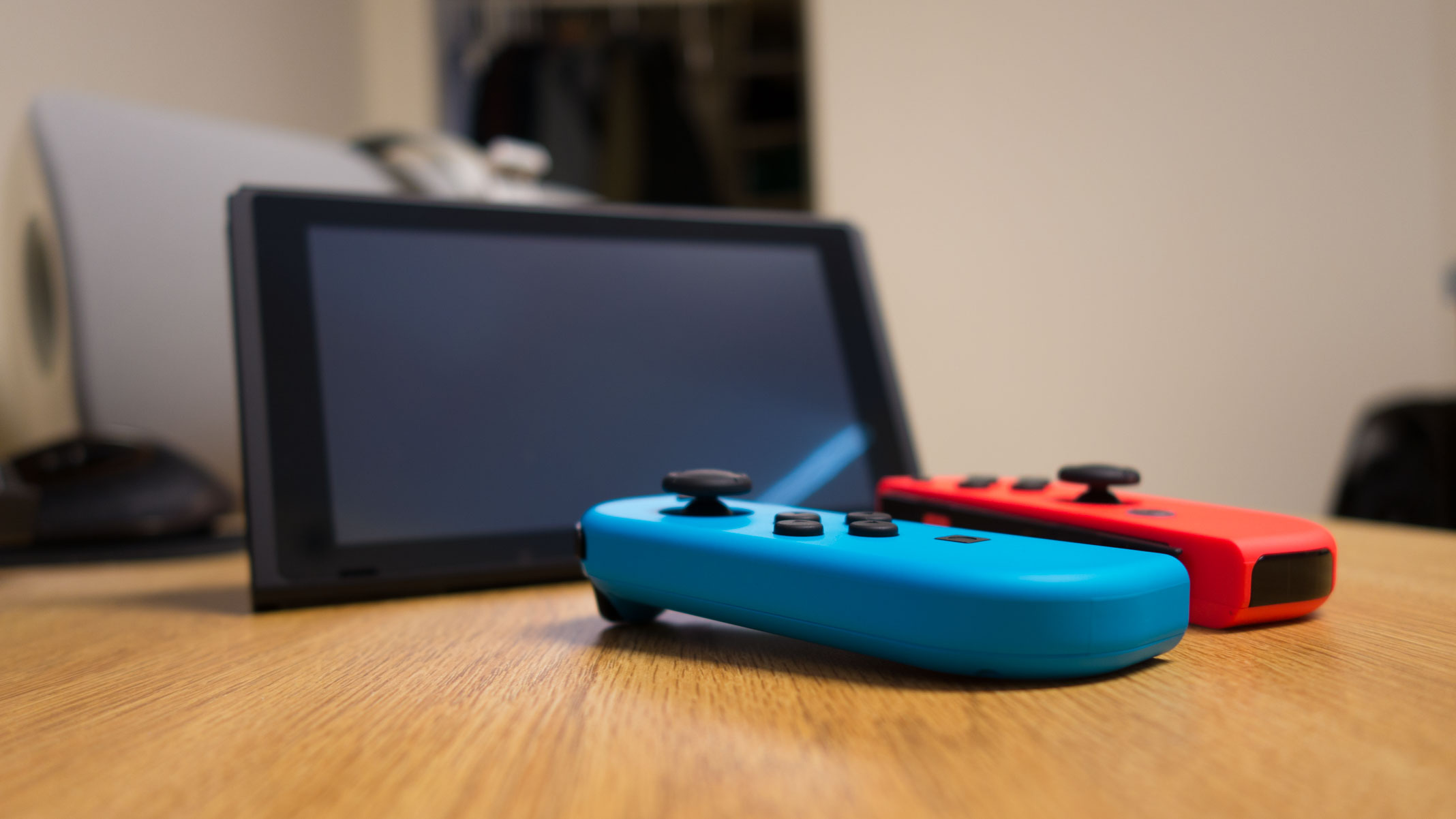
It’s hard to review a game console at launch.
A game console is judged by the experience it provides: the games it can play, the operating system and online functionality it hosts, and even the peripherals it supports. As console generations generally last for four to six years, the experience is rarely — really, never — ideal at launch. For that reason, it’s hard to declare a definite opinion of the Nintendo Switch in March of 2017. There is so much we still don’t really know about the Switch experience that will inform how people will remember it a decade from now.
I’ll try my best though. I’ve got a launch day Switch, I’ve got a handful of games for it, and I’ll walk you through what it’s like to own a Switch right now, and what I think it’ll be like to own a Switch at the end of 2017 and beyond.
Hardware and Setup
Nintendo has done a great job with the design for the Switch, from the hardware design to the branding. The use of the color red across the console's branding efforts fits right in with Sony's very blue PlayStation 4 brand, and Microsoft's very green Xbox One brand. It's a louder and brighter brand than the Wii U ever had, and I think that'll help it differentiate itself in ads and on shelves. The console packaging looks sharp on the outside, and for the first time that I can remember from Nintendo, the device itself is presented front and center as you open the box. The Joy-Con controllers come detached, a simple but smart ploy to force users to acquaint themselves with how they slide and dock onto each side of the system.
The Switch itself, sans Joy-Cons, is a bit of a weird beast. It's smaller than I imagined, even after watching countless hands-on impression videos. It feels well-constructed, but it feels heavier and far thicker than any other tablet I've held of this size. This fact alone makes me think that the Switch will never become a replacement for widescreen tablets from vendors like Amazon and Samsung; it's just too thick and unwieldy, even if the screen is roughly the correct size and resolution. (There's also effectively zero software available that would make it a suitable tablet replacement, but more on that later.) The 720p screen is very sharp given its 6.2-inch size, and it gets super bright, making it visible enough for daylight usage.
When you put the Joy-Cons on, though, it all makes sense. It’s no longer an awkwardly thick widescreen tablet; it’s suddenly a fantastically thin game console. It’s quite the transformation. The Joy-Cons have a satisfying actuation when they click in fully, and the unified package feels natural to hold in two hands. Build quality is almost uniformly excellent, save for the small kickstand on the back side. It's flimsy, and it feels like you're cracking a joint in your finger when you snap it out completely (not in a good way). The cheapness might be because it was designed to cleanly disconnect, rather than snap off, if angled too far out. This was a smart decision on Nintendo's part, because I'm sure people will accidentally try to dock the Switch with the kickstand out, and it's good that nothing will be permanently damaged.
Inside, the Switch has an NVidia Tegra processor, and there are two things that follow from that. First, as it is a mobile processor, it will never be able to measure up competitively with the graphical output of the PlayStation 4 and Xbox One. But, NVidia does some impressive things with its mobile chips nowadays, and a few Wii U ports like Mario Kart 8 Deluxe are running better than they originally did, indicating that at the very least, this thing is a step up in power from the Wii U. Second, and more importantly, the move to a more modern graphical platform allows the Switch to take advantage of development tools previously never available for Nintendo platforms. Theoretically this means it'll be much easier to port games to the Switch, and that's already becoming evident with the number of indie game ports that have been announced.
Build quality is excellent, save for a few concerning details
On the outside, there's a headphone jack up top and a USB-C port at the bottom that handles charging and video output through the included TV dock. The dock is a spartan piece of plastic that holds the Switch upright and allows it to function like a proper home console. The Switch isn't held very tight in the dock, so when you need to swap game cards, the Switch will wobble around as you do it. On one occasion, I actually unseated the Switch from the plug at the bottom while doing this, so I would have liked to see the tablet be held more tightly when seated. Regardless of how securely it sits in the dock, it's neat how quickly the device will switch between docked and undocked video output. This would have been an all-too-easy spot for the device to fumble, with video switching taking several seconds, but it consistently works quickly with no fuss.

The choice to use USB-C is refreshingly forward-thinking on Nintendo’s part. USB-C is an increasingly common standard that packs a lot of functionality into one port. My only wish is that the port were inset from the bottom of the unit by an inch or so, with room for the cord to curve out of the way. As it stands now, the tablet can’t stand up on a table on its own when a power cord is coming directly out of the base of the unit. Several cases and stands already on the market work to mitigate this, but it would be nice not to need to buy an accessory to solve the problem.
The Switch will work with USB-C compatible battery packs, but it may charge quite slowly unless you get one that can output the proper wattage. A battery pack may be handy, because the Switch will only get between three and six hours of battery life, depending on the game you're playing, screen brightness, and wireless usage. Those figures are just acceptable for me. I may be in the minority, but I rarely use a handheld for more than three hours straight without taking a break.
One note about the headphone jack and sound output that makes me uneasy: I hear static interference when I plug headphones into the Switch. This generally stems from there not being enough electric shielding between components inside a device, and it's a hallmark of electronics with middling build quality. This is the type of thing that never crops up on modern smartphones or laptops, and I can't remember another Nintendo handheld ever having an issue with it. The interference comes through regardless of the volume on the Switch, and its intensity will vary based on how hard the processor is working. On the home screen, I hear a slight buzzing; in Zelda, I hear a louder buzzing that's noticeable any time the game gets quiet. Investigating this issue also brought me to notice that the Switch has that type of, well, cheap audio output where turning the volume down all the way doesn't actually mute anything. At 0 volume, you can still hear the Switch's audio very quietly.
These audio quirks demonstrate that the Switch is not of premium build quality across the board. Unless I got a bum unit, I'm stuck with the device forever making a buzzing noise when I use it with headphones. A cheap (read: $79) Windows tablet I used to own had a headphone jack with the same symptoms; I resold the tablet and vowed to never buy something so obviously cheap again. I am very surprised to see Nintendo ship a console with the same problem.
The Joy-Cons
The left and right controller halves, deemed the Joy-Con controllers by Nintendo, have a lot of thought put into them to try and maximize utility and versatility. Together, they roughly form a complete modern game console controller, but individually, they also house expensive rumble technology and motion sensors. The standardized button layout, with each Joy-Con having an analog stick, four face buttons, and two shoulder buttons, allows each to function as an individual controller when held sideways, much like how the Wii Remote was designed 10 years ago.
The HD rumble inside looks to be a technology that Nintendo swept up from Miraisens. This is reminiscent of Nintendo building the Wii U around low-latency video streaming: they were pitched a technology, felt it was too cool to resist, and ended up boxing themselves in by building an entire console around it. HD rumble doesn't seem as frivolous as the Wii U's GamePad does in retrospect, but I do think Nintendo has still boxed itself in somewhat, because the Joy-Cons are expensive: $50 per left or right, or $80 for a bundled pair. Nintendo has committed to a technology that clearly makes these small controllers more expensive than they otherwise could have been, and it's unclear if the functionality will ultimately justify the added cost.
The Joy-Cons have premium functionality and a premium price to match
Maybe you get what you pay for, because HD rumble is quite impressive when you try it out, and it's like no rumble I've ever felt before. It provides the sensation that rumble is moving around within the controller, like three-dimensional haptic feedback. The best tech demo for this is Ball Count, a minigame in 1-2 Switch where you tilt your Joy-Con around as if it were a wooden box housing marbles inside. HD rumble allows you to feel each individual marble rolling around from one end to the other. This is a great use of the technology, but I wonder if it will meaningfully be applied to other games. For the time being, it often ends up feeling like a slightly weaker-than-average rumble that you'd get in any other controller.
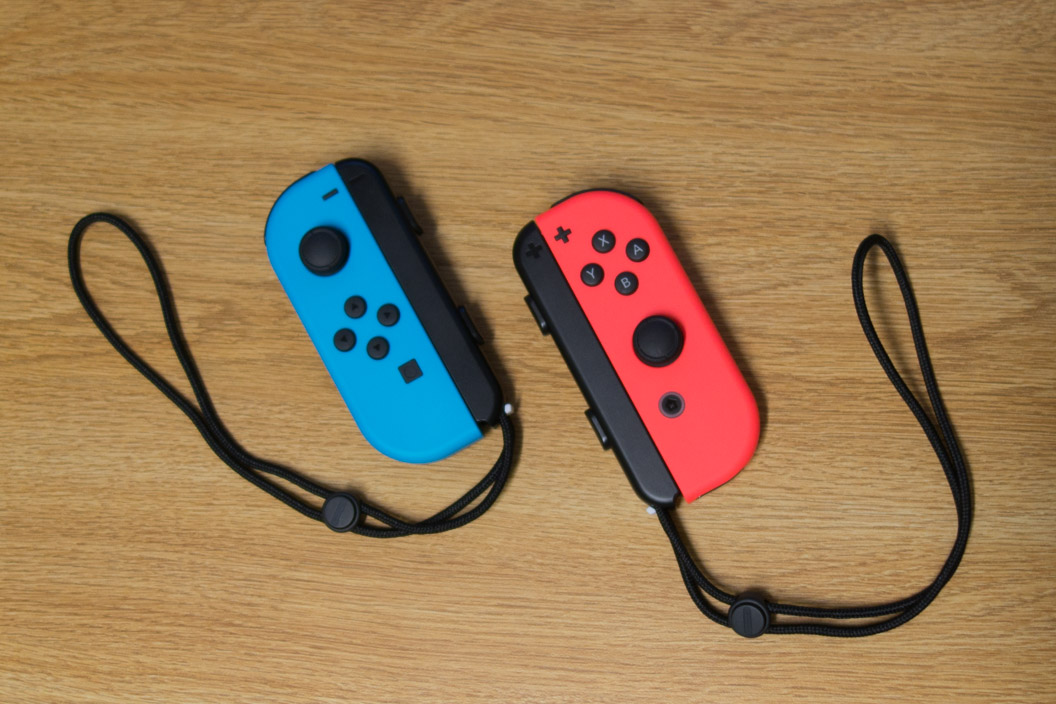
Each Joy-Con comes with a strap that increases the grippable surface area. (Just don't put them on backwards.) Each strap also has two buttons that improve the pressability of the SL and SR shoulder buttons, but these end up being kind of difficult to press. In fact, I've found that each Joy-Con on its side, even the right-hand one with a more awkwardly central analog stick, is pretty comfortable to use as a mini-controller. Surprisingly so. It's when you have to rearrange your grip to start pressing the shoulder buttons that the whole thing begins to feel substandard. Still, though, having an analog stick is leagues better than having a directional pad on the Wii Remote ever was, and I think that the Joy-Cons will offer serviceable control for casual multiplayer games.
Many outlets are reporting issues with the left Joy-Con losing connection to the Switch when being behind a hand, body, or far away from the console. I am lucky to have not noticed this with mine, even when the Switch was sitting behind my TV. It's unfortunate that Nintendo allowed the problem to exist in any capacity at launch, and it's frustrating that Nintendo has not addressed the problem directly. We'll see if it's something that can be completely fixed with a software update, or if a hardware recall will become necessary.
The Joy-Cons can also be docked together in the aptly named Joy-Con Grip. It's not much more than a piece of plastic, but it does a nice job of framing the small controller halves in a larger grip that feels akin to a standard controller.
I have not had the chance to try the Pro Controller, which retails for $70 and offers most "expensive" features of the Joy-Cons, including an NFC reader for Amiibo and HD rumble. One small thing it's missing, particularly for its high price, is a headphone jack to stream Switch audio. PlayStation and Xbox have this feature, but I'm not surprised that Nintendo didn't implement it. It's not a necessity, but it's a nice-to-have, and it's one more small thing about this console that reminds me that Nintendo just doesn't grant their consoles the same functionality that we expect of other consoles nowadays.
Software and Ecosystem
The Switch has a really beautiful, if minimal, interface, and it loads far faster than the interface of the Wii U ever did. It takes just around five seconds to boot up, whereas the Wii U could take closer to 20 depending on what you were doing. It all works via button controls as well as via the Switch's capacitive touchscreen, which performs just fine. There is just enough functionality here to let you do what you need to do with the Switch: play games. You can tweak video output settings, create a Mii for your profile, take screenshots, and browse the eShop. That's about it though. Even the Wii U had the Miiverse to make the console feel a little more alive when you booted it up. There's no menu music here, no anything. Even the Mii maker, which is now relegated to a settings screen, is devoid of any character it once had, missing its catchy theme song from the Wii. It all verges on feeling like a tech demo interface, something that's purposefully feature-incomplete. Maybe Nintendo is trying to be a more mature Nintendo, but it sort of comes off like a "no fun allowed" Nintendo.
As of now, there are several things that feel missing from the Switch's operating system:
- The capture button only works for screenshots, not gameplay video. Nintendo says this is coming, but no firm date has been announced.
- You can't connect to Bluetooth headphones or speakers.
- There's no on-demand web browser available currently, which means I had to manually fetch the device's MAC address from a settings menu to register it on my university wi-fi network. (The console does have a web browser that comes up when connecting to a public wi-fi network that requires signing in, but because my network doesn't use that same sign-in protocol, I was out of luck.)
- There are no apps for now, so that means no streaming of Netflix or YouTube or music services.
I expect that some of these will eventually be resolved, but until Nintendo shares more information publicly about the future of this OS, owners will be left wondering if the device will ever do more than just play games.
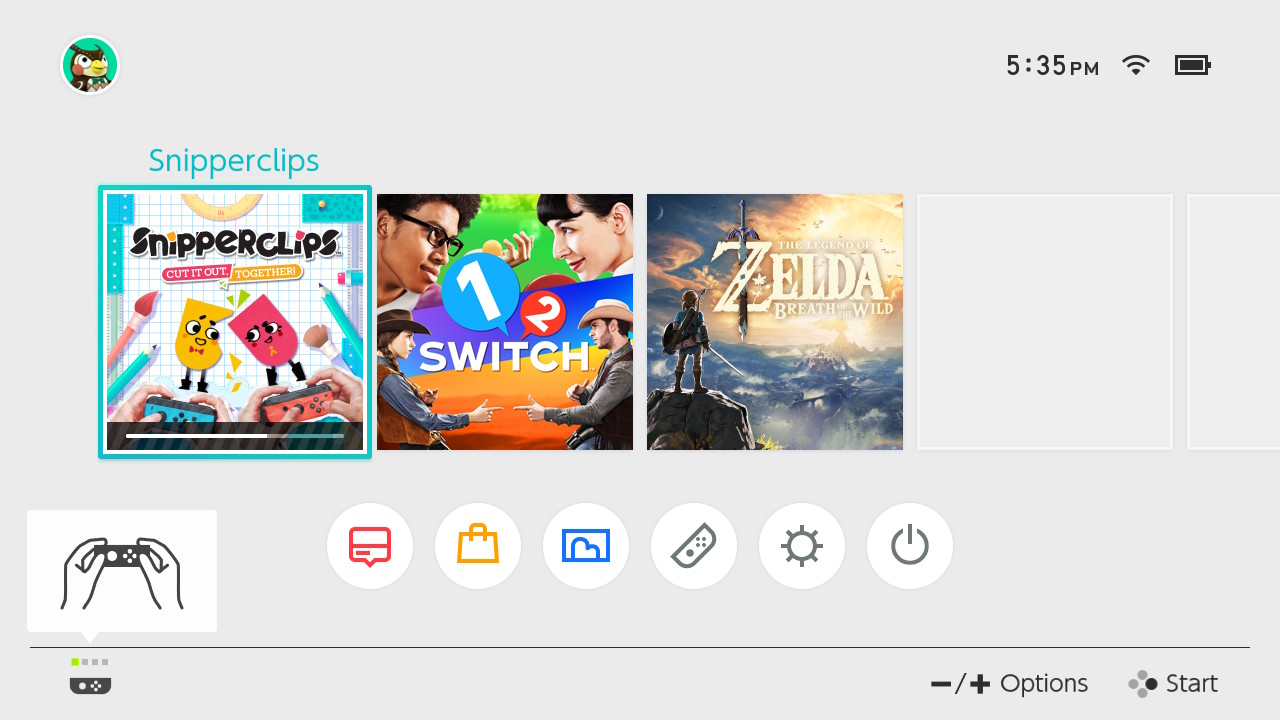
One thing that bothered me about the Wii U is that its interface was designed to be nicely viewable and touchable on its 6.2-inch 480p touchscreen. Because of that, buttons, text, and icons were all massive, regardless of whether or not the console was being used on a higher resolution TV. So, even when outputting to a 1080p screen, the interface looked wholly inflated and awkward. This seemed especially cheap when juxtaposed with the PlayStation 4 and Xbox One, which both used full HD resolution to fit a lot more onto the screen. I was really hoping that this would change with the Switch, but unfortunately we've got the same issue here: a small, lower-resolution touchscreen that has to neatly display the same interface that will be displayed on larger screens. The interface renders at 720p on the Switch itself and looks plenty good and legible.
When connected to a TV, the interface still only renders at 720p, which really bothers me. It's very easy to tell the difference between the crispness of 720p and 1080p at most viewing distances, especially with how big TVs are nowadays. And not only does it output to 720p, but all of the user interface elements are still sized the same way, so you end up with the same problem that the Wii U had, just not to the same extent, because the resolution difference isn't as vast.
There is just enough functionality here to let you do what you need to do: play games
More alarming than the lack of web browser is lack of information from Nintendo about Virtual Console support. One of Nintendo's best assets is its unmatched catalog of celebrated classic games, and it has the opportunity here to introduce the most complete Virtual Console catalog it has ever made available, ostensibly by merging the offerings available on the Wii, Wii U, and 3DS, as well as hopefully introduce new consoles to be emulated, like the GameCube. Nintendo hasn't announced anything yet, so we don't know when this functionality will be enabled. I expect it to happen sometime before the end of 2017, but it would have helped the console's lackluster launch lineup slightly if we knew we could also play Super Mario Sunshine or Super Smash Bros. Melee on the go.
Most alarming of all, however, is Nintendo's unexplainable approach to online play for the Switch. In 2017, Nintendo is launching a system with half-baked online functionality that won't become complete until later in the year. Friend codes have made another appearance, after Nintendo of America President Reggie Fils-Aime said that they would not be present on the Switch. Nintendo says that better friend adding is coming, but again, it raises the question of why this functionality was not available on Day 1. When full online support does come to the console, it appears as if voice chat will only be possible through a tethered smartphone app. Of all the design decisions of the Switch, this one has me the most baffled. I dearly hope that in the next few months, we find out that it was all one big miscommunication, and that voice chat will also be possible through the console itself. I doubt that'll be the case though, as the executives have been prodded about it several times and haven't changed their tone.
The soft, incomplete launch of Switch services reeks of incompetence, be it executive leadership incompetence, software engineering incompetence, or a mixture of the two
The soft, incomplete launch of Switch services reeks of incompetence to me, be it executive leadership incompetence, software engineering incompetence, or a mixture of the two. Nintendo has had close to five years to craft a better online infrastructure for the successor of the Wii U. What they've provided for us on launch day is simply not good enough.
The Games
The only thing the Switch is good for right now is playing games. I opted to buy three Nintendo launch titles on day one: The Legend of Zelda: Breath of the Wild, because that's most of the reason to own the console at all right now; 1-2 Switch, because despite its high price and shallow-looking gameplay, I wanted to test the HD rumble and play it among friends; and Snipperclips, because it looked like a truly charming cooperative puzzle game, and at under $20, it's reasonably priced.
Zelda is stunning. The open-world adventure feels massive, epic, and polished. It looks beautiful in portable mode and when played on a TV. I'm gradually working my way through it, but it's already clear that it will be a very special game, and the record-tying Metascore is a clear, unanimous indication of that. This game is singlehandedly making the Switch a compelling proposition right now.
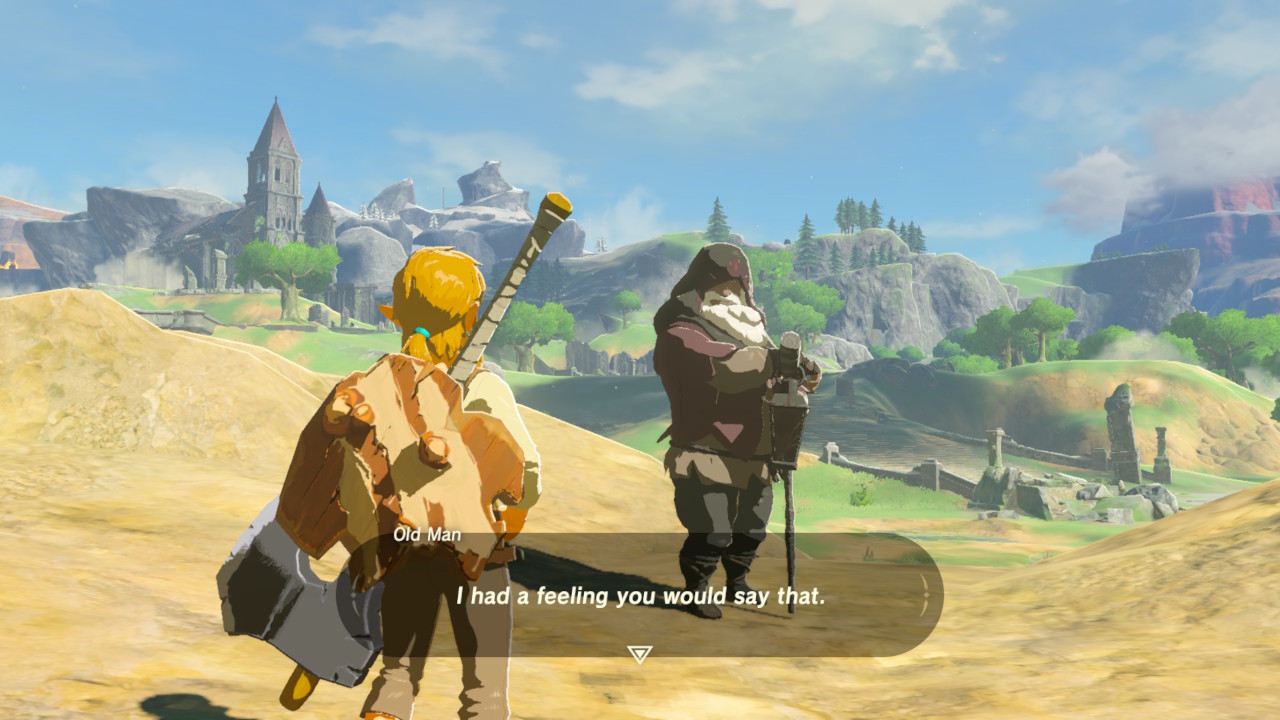
1-2-Switch is catching a lot of flak for being a shallow minigame collection sold for $50, but it took me by surprise. I've played it on a few occasions with friends and roommates, and we've had a lot of fun working through the minigames. It's mostly a showcase for HD rumble, so once you've experienced that, some of the novelty wears off quickly. Some games are very much play-once sorts of games, but others, like the surprisingly exciting but boringly named Joy-Con Rotation, is addictive to play with an invested opponent.
In Joy-Con Rotation, you take turns picking up a sideways Joy-Con off of a flat surface, rotating it as carefully as possible while keeping the side parallel with the ground, and setting it back down gently. The goal is to get more total rotation, measured by the game in degrees, than your opponent after three rounds. If you go for an especially big rotation with your wrist but wobble too much, your turn ends with no progress gained. I'm surprised that this, of all games, ended up being the one that stuck out to my friend and me when we first played it. "That's a good one, we'll play that more", we both agreed. It's a shame that so few of the games in 1-2 Switch have that sort of staying power. Judging by its embarrassing Metascore, I wouldn't be surprised if its price gets dropped to $20-30, at least digitally, in a couple of months' time.
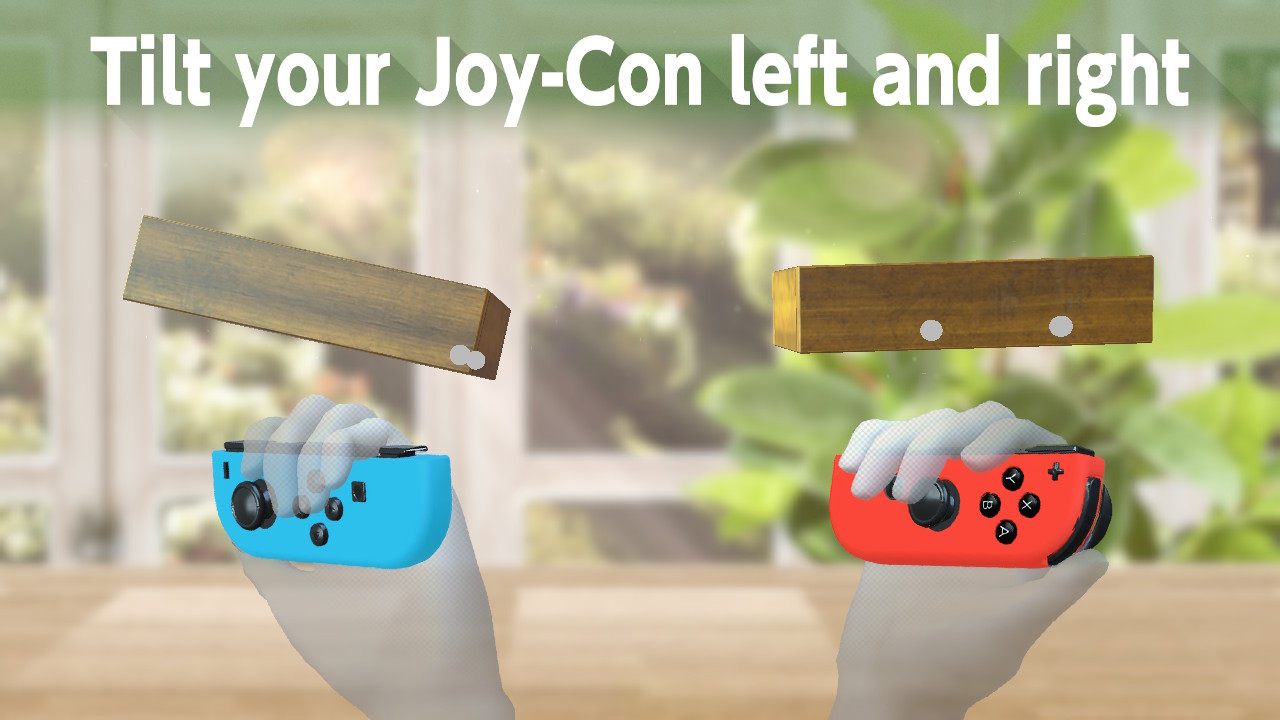
Snipperclips is just great. It's got a neat two-dimensional papery aesthetic and can be played individually or cooperatively. It's a casual blend of physics- and geometry-based puzzles, and it's a blast to play with a friend. Some levels also support up to four players. The inventiveness of each level has surprised me the most so far, and the game gives you next to no guidance as to how the levels should be solved. It took a friend and me 10 or 15 minutes of fumbling around on a level involving balloons before we realized we had to cut one of our characters into a sharp point to pop them. It was a rewarding insight when it finally came. I look forward to playing a lot more of Snipperclips, and I hope that it has enough levels to make it worth its price.
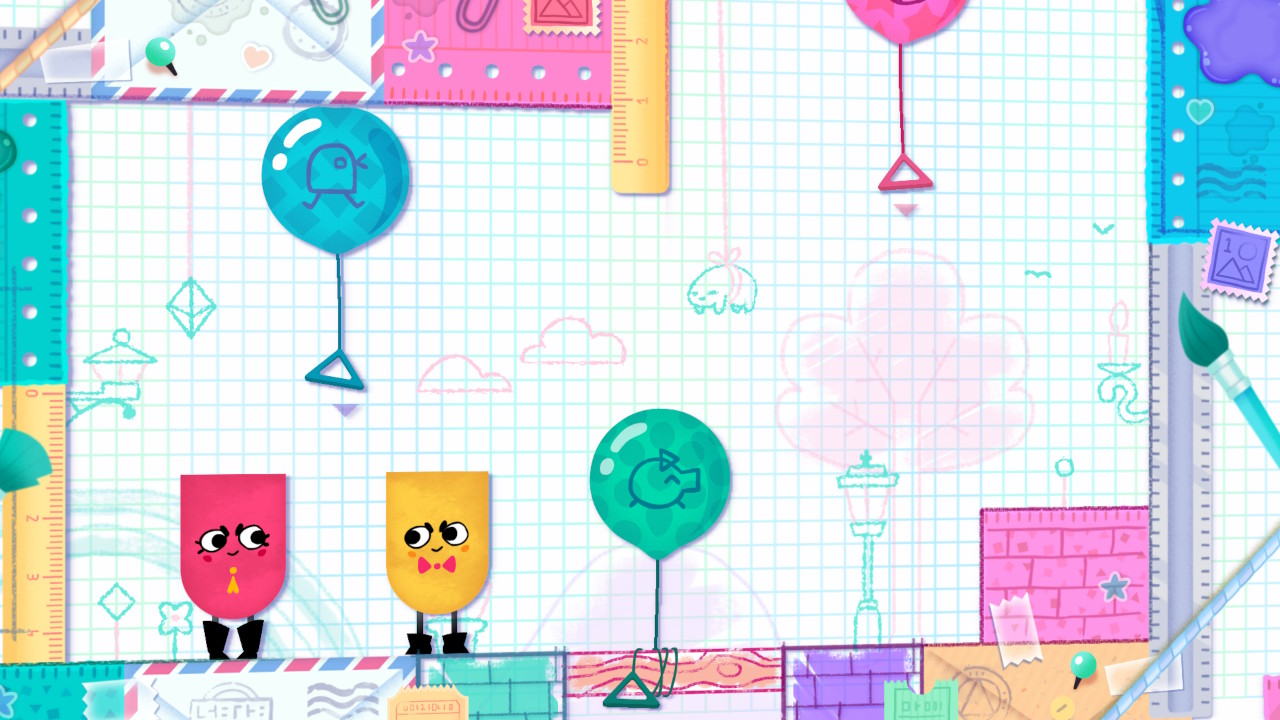
In the next several months, Switch owners can look forward to Mario Kart 8 Deluxe, ARMS, and Splatoon 2 from Nintendo, as well as several exciting indie titles. It's a slow trickle of games for the time being, but at least Nintendo seems committed to steadily releasing content throughout the coming spring, summer, and fall.
The Cost
Let's talk cost for a moment. Below is the cost of entry for each major home console. (Note that I'm quoting commonly observed pricing for Sony and Microsoft consoles rather than strict MSRP. Since Holiday 2016, each console seems to be perpetually on sale for closer to $200, often with a bundled game, rather than $300.)
- Nintendo Switch with Joy-Cons and a flagship game: $360
- Nintendo Switch with Joy-Cons, Pro controller, and a flagship game: $430
- Sony PlayStation 4 Slim with traditional controller and a flagship game: ~$220
- Microsoft Xbox One S with traditional controller and a flagship game: ~$220
Come Holiday 2017, the Switch's value will surely increase with a free bundled game, but it will then face further competition from a cheaper PlayStation 4 Pro and Microsoft's new supercharged Project Scorpio iteration of the Xbox One. I fear that the Switch is generally cost-prohibitive right now, and fierce innovation and revision on the part of Sony and Microsoft might prevent Nintendo from ever catching up. The competition simply has too much of a head start.
The Switch is billing itself as multiplayer-centric, aided largely by the convenience of sharing one pair of Joy-Cons between two people. This is great, and I'm happy to see so many multiplayer games announced so far, but I am dubious that a single Joy-Con will fully satisfy any invested gamer. For anything more than casual play, you'll surely need to upgrade to more expensive controllers, which just adds to the cost of ownership. For example, when Super Smash Bros. for Switch inevitably comes to the console, to seriously play the game with friends, you'll either need to spend $70 per friend to buy additional Pro Controllers, or you'll have to spend $95 per friend to get additional Joy-Con sets with grips ($110 if you want a grip that can actually plug into power and charge the Joy-Cons (!)).
The Switch is simply too expensive right now for the games and services it promises. The competition offers much better graphical horsepower, (which ends up leading to) thorough third-party support; compatibility with VR headsets; and mature online ecosystems. For many gamers, the comparison will make the Switch a non-starter.
Present and Future
Right now, the Switch is most compelling as a personal portable console that happens to be able to pass as a home console, too. The value proposition for the Switch as a single-player focused home console is middling.
At the end of 2017, the Switch will have Zelda, it'll have Mario, it'll have Skyrim and NBA 2K18 and FIFA 18. There will also hopefully be several more games announced for the console after E3 2017. So, around Christmas time, the Switch should at least have a respectable library of high quality games. The question is what comes after that.
There's a lot still unproven about this device. Most notably, I am worried that the online functionality of the system will be crippled from the start, and that the console's power-portability tradeoff will ultimately prevent many flagship third-party titles from ever being released for it. The limited engagement thus far of publishers like Ubisoft, EA and Activision is unsettling, to say the least.
But equally, I now feel confident that the Switch will see some degree of success. There's enough right here that I think people will buy it. Kids will want it. It'll do great at the holidays. It looks to already have some exciting support from indie developers, and I think that will only grow with time. There's a small part of me that feels like the Switch might end up being a really big hit.
There's a lot still unproven about this device
The Switch will surely end up hosting many excellent Nintendo games. It may also become the most local multiplayer-centric console we've had since the Wii, which is personally a compelling angle for me and my gaming habits.
The big gimmick this time around — the ability to play your games at home and on the go — actually does improve convenience. I like the idea that the Switch focuses on letting you enjoy games wherever you are, and maybe that will mean that I end up playing and completing more games for it than on my other consoles. But there's one more gimmick that may limit the console's reach: The Joy-Cons that are packed with expensive, and possibly unnecessary, technology. I can't help but wonder if the console could have launched at a cheaper price had the Joy-Cons been greatly simplified.
For now, the Switch hosts one super good experience, and that's Zelda. If you really want to play Zelda, and know you're going to want to buy a Switch eventually for other Nintendo titles, now's a fine time to jump in. Otherwise, if you're on the fence, possibly holding onto another console or gaming PC, I would definitely wait. In a year or so, the cost of the Switch and a game will likely be cheaper, and it'll be much clearer what sort of game library and online ecosystem you are — or aren't — buying into. If you buy the Nintendo Switch, you are paying a hell of a premium for portability and the promise of a strong library of Nintendo first-party games. It's up to you to decide if that's worth the cost of entry, given that just about every other thing about the console is up in the air. ■